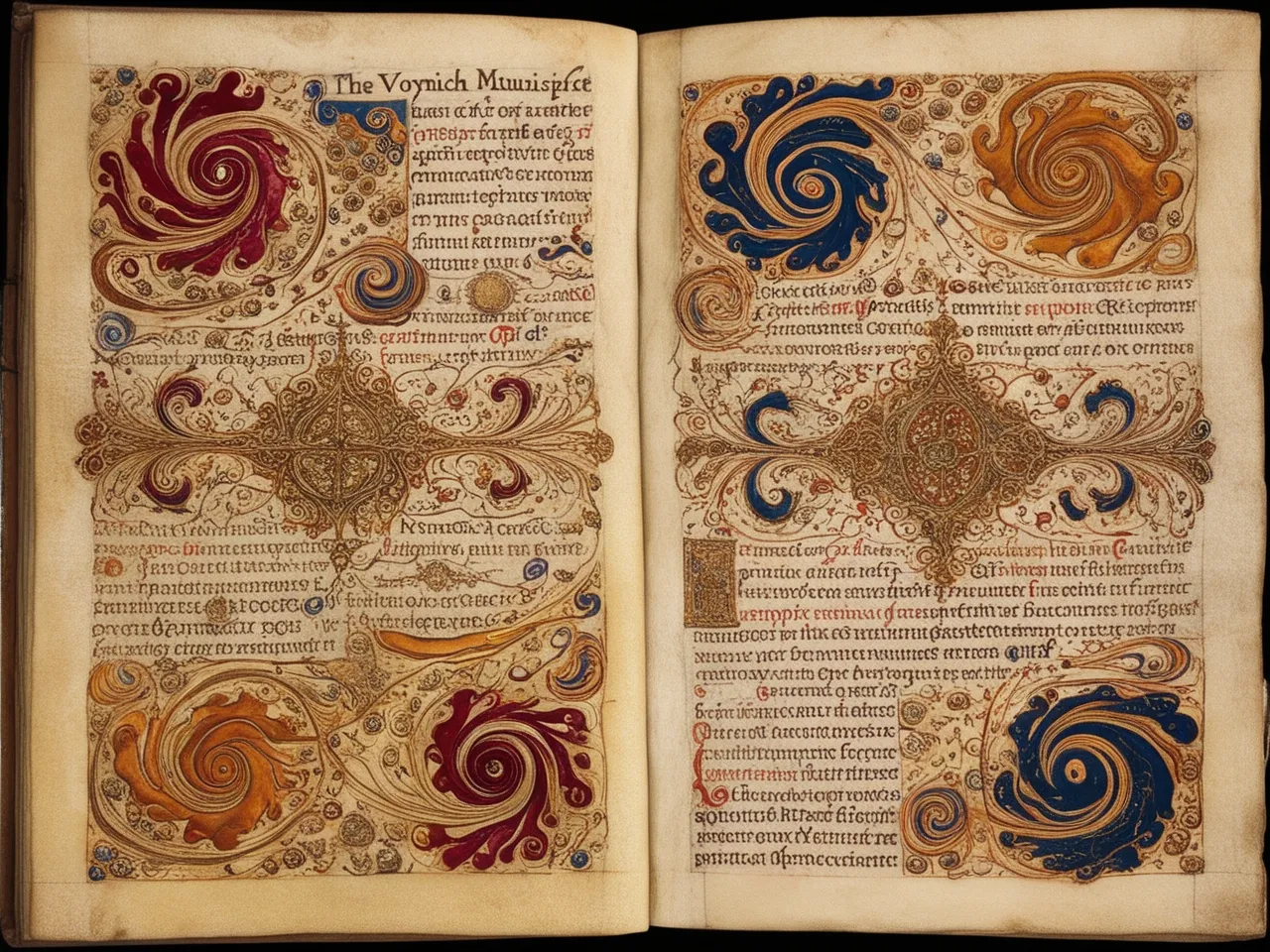The Voynich Manuscript, a mysterious and enigmatic book dating back to the early 15th century, has captivated historians, cryptographers, and enthusiasts for centuries. This article delves into the manuscript’s origins, content, and the numerous attempts to decode its cryptic text, providing a comprehensive look at one of history’s most intriguing puzzles.

What is the Voynich Manuscript?
The Voynich Manuscript is an illustrated codex hand-written in an unknown script. The vellum on which it is written has been carbon-dated to the early 1400s, and the text has been studied extensively by cryptographers, including American and British codebreakers from both World War I and World War II. The manuscript is named after Wilfrid Voynich, a Polish book dealer who acquired it in 1912.
Historical Background
The manuscript’s origin remains shrouded in mystery. It is believed to have been created in Central Europe during the Italian Renaissance. The earliest confirmed owner was Georg Baresch, a 17th-century alchemist from Prague. Upon Baresch’s death, the manuscript was sent to Athanasius Kircher, a Jesuit scholar in Rome, who had previously published a Coptic (Egyptian) grammar and was thought capable of deciphering the manuscript’s text.

Physical Description
The Voynich Manuscript consists of 240 pages of vellum, with text written from left to right. The illustrations are unlike any other, featuring elaborate, often fantastical plant drawings, zodiac symbols, and human figures. These illustrations are divided into six distinct sections:
- Herbal Section: Features drawings of various plants, some resembling known species, others entirely unique.
- Astronomical Section: Contains diagrams of celestial bodies, zodiac symbols, and star charts.
- Biological Section: Depicts human figures, many of whom are unclothed and immersed in what appears to be a green liquid, possibly symbolizing a medicinal bath.
- Cosmological Section: Includes intricate, fold-out charts and maps, some of which seem to represent astronomical phenomena.
- Pharmaceutical Section: Displays plant parts alongside containers resembling apothecary jars.
- Recipes Section: Lists text paragraphs, each marked with a star or asterisk, perhaps indicating a form of medicinal or alchemical recipe.
The Enigmatic Script
The most perplexing aspect of the Voynich Manuscript is its text, written in an unknown script composed of approximately 25-30 distinct characters. Despite numerous attempts, no one has been able to decode it. Theories abound, ranging from it being a cipher or coded language to an elaborate hoax.
Attempts to Decipher the Manuscript
Early Efforts
Athanasius Kircher, one of the first scholars to study the manuscript, believed it was written in a lost language. However, his efforts to decode it were unsuccessful. The manuscript languished in obscurity until it was rediscovered by Wilfrid Voynich in 1912.

20th Century Codebreakers
During World War I and II, some of the world’s best codebreakers, including William Friedman, who led the team that broke Japan’s PURPLE code, tried to crack the manuscript’s code. They all failed to make any significant progress.
Modern Approaches
In recent years, computer algorithms and AI have been employed in the attempt to decode the manuscript. Some researchers claim partial success, suggesting the text may be written in an extinct language or a sophisticated cipher. However, these claims remain controversial and widely debated.
Theories and Speculations
Hoax Theory
One popular theory is that the Voynich Manuscript is an elaborate hoax, created to fool scholars and make a profit. Some point to the bizarre plant drawings and the nonsensical text as evidence. However, the manuscript’s complexity and the use of high-quality vellum suggest it would have been an extremely costly and time-consuming prank.

Cipher Theory
Many believe the manuscript is written in a complex cipher. This theory is supported by the apparent structure and patterns in the text, which resemble natural language in some respects. However, despite extensive analysis, no one has been able to identify the underlying code.
Linguistic Theory
Some researchers suggest the text represents a previously unknown or extinct language. In 2014, a study proposed that the manuscript could be a form of an extinct language, written using an invented script. This theory aligns with the idea that the manuscript could be a medical or herbal text from a lost culture.
Extraterrestrial Theory
A more fringe theory posits that the manuscript is of extraterrestrial origin. Proponents of this idea argue that the plant drawings and star charts represent alien flora and celestial bodies. However, this theory lacks substantial evidence and is widely dismissed by the academic community.
The Voynich Manuscript in Popular Culture
The manuscript’s mystery has made it a popular subject in literature, art, and media. It has inspired numerous books, documentaries, and even video games. Its enigmatic nature continues to fascinate and inspire new generations of researchers and enthusiasts.
Recent Developments
In recent years, the Beinecke Rare Book & Manuscript Library at Yale University, where the manuscript is housed, has digitized the entire codex, making it accessible to scholars and the public worldwide. This has spurred renewed interest and study, with researchers employing advanced technology and interdisciplinary approaches in their efforts to decode the text.

Conclusion
The Voynich Manuscript remains one of history’s greatest enigmas. Despite centuries of study and numerous attempts to decipher its text, the manuscript continues to defy explanation. Whether it is a sophisticated cipher, a lost language, or an elaborate hoax, the manuscript’s allure lies in its mystery. As technology advances and new methodologies are developed, the hope remains that one day, the secrets of the Voynich Manuscript will be unveiled, providing a fascinating glimpse into the minds and cultures of the past.











